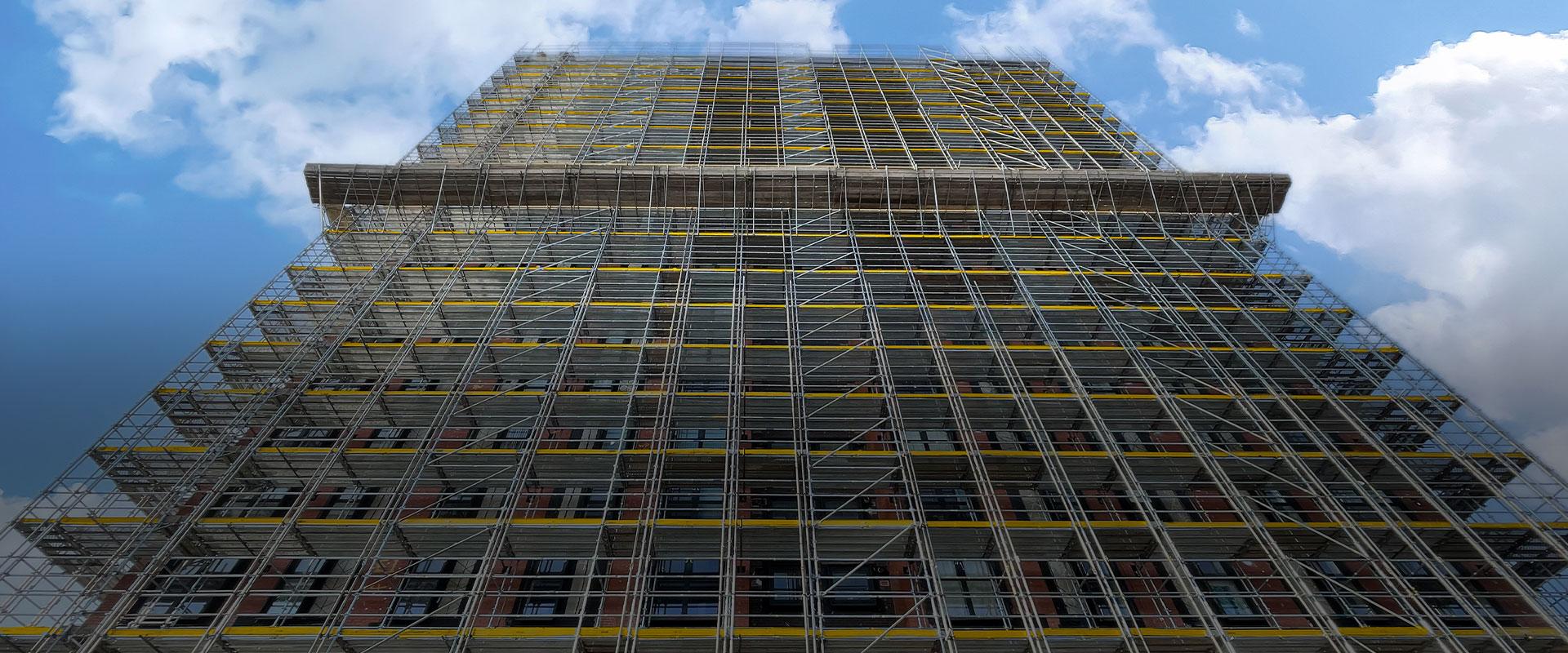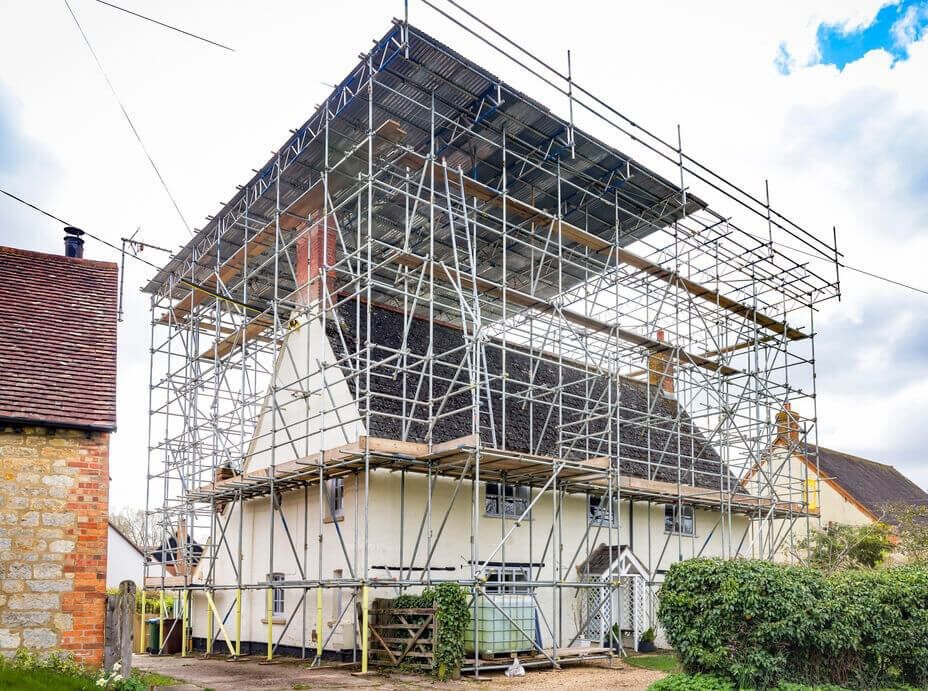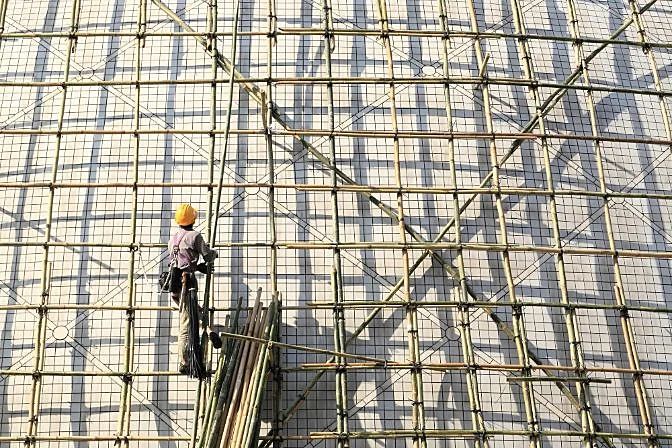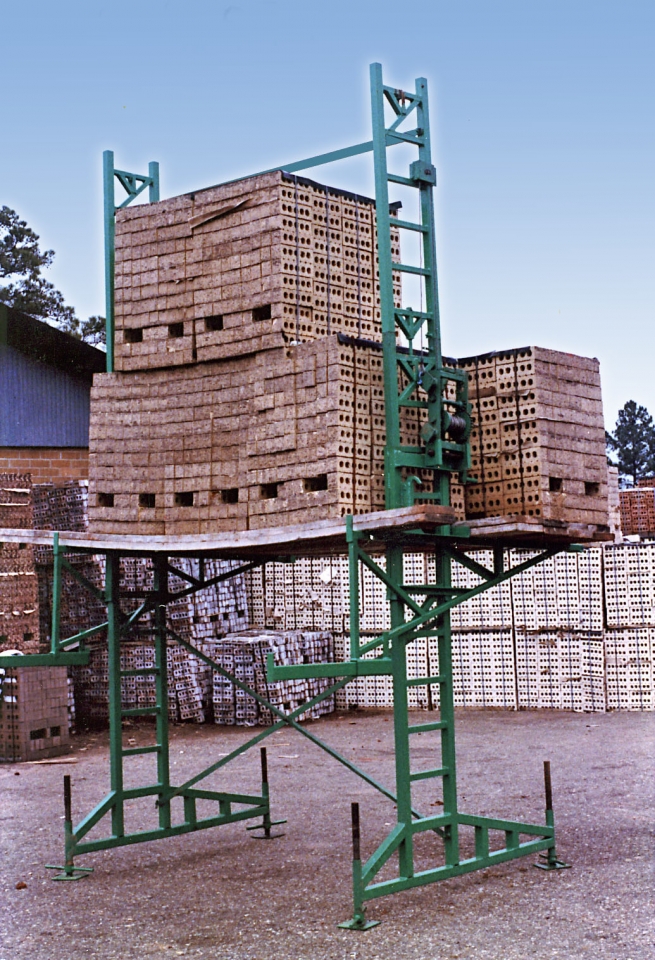Professional Scaffolder Surrey: Your Trusted Partner for Safe Installations
Professional Scaffolder Surrey: Your Trusted Partner for Safe Installations
Blog Article
Discovering the Various Sorts Of Scaffolding Made Use Of in Construction Tasks
The building industry counts heavily on various types of scaffolding to meet details task needs, each offering distinct benefits and applications. Traditional structure scaffolding offers a sturdy structure for basic tasks, while put on hold scaffolding is necessary for job on high-rise structures. Various other choices, such as system and rolling scaffolding, deal with performance and wheelchair, respectively. The cantilever variant verifies vital in city settings where room is constricted. Recognizing the subtleties of these scaffolding types is essential for maximizing safety and security and performance on building sites, motivating a closer assessment of their one-of-a-kind attributes and applications.

Conventional Frame Scaffolding
Standard frame scaffolding is just one of one of the most commonly made use of approaches in the building and construction market because of its toughness and versatility. This system contains vertical and horizontal structures that are assembled to develop a steady system for products and workers. The main components include upright messages, straight ledgers, and angled dental braces, which with each other supply a strong structure that can sustain significant loads.
Among the essential benefits of traditional framework scaffolding is its flexibility to various building projects, varying from property buildings to big business structures. The modular style permits very easy setting up and disassembly, making it reliable for both lasting and temporary jobs. In addition, the system can be customized in height and size, fitting various structure designs and website problems.
Safety is vital in scaffolding applications, and traditional frame systems are geared up with guardrails and toe boards to avoid falls and make sure employee protection. In addition, routine inspections and adherence to security laws are important in keeping the honesty of the scaffold. Overall, traditional frame scaffolding stays a basic selection in the construction market, supplying a reputable platform for labor and boosting general project effectiveness

Suspended Scaffolding
Suspended scaffolding supplies a distinct remedy for building projects that call for access to elevated surfaces, specifically in situations where traditional framework scaffolding might be unwise. This sort of scaffolding is normally put on hold from the roof covering or upper levels of a structure, using a system of systems, ropes, and wheels to create a working area that can be readjusted to various heights.
Among the key benefits of put on hold scaffolding is its flexibility. It can be quickly repositioned or reduced to accommodate adjustments in construction demands, making it suitable for tasks such as window installation, façade work, and upkeep on skyscrapers. In addition, the marginal impact of put on hold scaffolding permits better use of ground space in city environments, where room is typically limited.
Safety is a vital factor to consider in the usage of suspended scaffolding. Overall, put on hold scaffolding supplies a reliable and reliable service for accessing hard-to-reach locations in various construction situations, enhancing both efficiency and safety and security on website.
System Scaffolding
System scaffolding, commonly concerned as a modern-day solution in the scaffolding sector, consists of pre-engineered parts that can be promptly assembled and adjusted for various construction jobs. Scaffolding. This kind of scaffolding is characterized by its modular style, which enables flexibility and efficiency on job sites, accommodating architectural needs and various elevations
Usually made from high-strength steel or light weight aluminum, system scaffolding uses improved longevity and stability. The parts consist of upright blog posts, straight journals, and diagonal braces, which interconnect safely, guaranteeing a durable structure. The design usually integrates standardized installations, simplifying setting up and disassembly processes, thus minimizing labor time and costs.

Rolling Scaffolding
Moving scaffolding is a flexible option to traditional fixed scaffolding, made for mobility and convenience of use on construction sites. This kind of scaffolding includes a system sustained by frameworks with wheels, allowing employees to conveniently relocate it as needed. The wheelchair feature substantially improves efficiency, as it minimizes downtime connected with dismantling and assembling repaired scaffolding.
Generally created from lightweight products such as aluminum or steel, rolling scaffolding supplies a tough yet mobile option for projects needing regular repositioning - Scaffolding. It is especially advantageous in jobs such as paint, drywall setup, and electric job, where accessibility to different elevations and areas is required
Safety and security is extremely important in rolling scaffolding design, with features such as securing wheels to avoid unintentional movement when in use, and guardrails to shield employees from drops. Additionally, numerous designs are adjustable in height, fitting numerous job demands.
Cantilever Scaffolding

The design look at more info of cantilever scaffolding commonly involves making use of arms or brackets anchored to a building or framework, enabling the system to extend external securely. Security is paramount; hence, these scaffolds have to be crafted to endure ecological conditions and various lots. Normal evaluation and maintenance are important to make sure structural stability and employee security.
Cantilever scaffolding is preferred for its flexibility and effective use of area, making it a preferred option in metropolitan settings where room restraints are typical. In addition, have a peek at these guys it helps with simpler access to high altitudes, inevitably adding to the total performance of building and construction jobs. As with all scaffolding types, correct training and adherence to security standards are vital for employees utilizing cantilever scaffolding.
Conclusion
In final thought, the diverse sorts of scaffolding utilized in building and construction projects each offer distinctive functions tailored to specific site needs. Typical structure scaffolding gives security, while suspended scaffolding provides flexibility for elevated tasks. System scaffolding assists in quick setting up, and rolling scaffolding boosts wheelchair for varying workplace. Cantilever scaffolding successfully attends to challenges in urban setups. Understanding these scaffolding kinds is essential for optimizing safety and performance in construction, inevitably adding to the successful completion of projects.
Standard framework scaffolding provides a durable foundation for basic tasks, while suspended scaffolding this page is vital for work on skyscraper frameworks.Rolling scaffolding is a flexible option to traditional fixed scaffolding, designed for movement and ease of usage on construction websites. As with all scaffolding types, proper training and adherence to safety criteria are important for workers making use of cantilever scaffolding.
Typical framework scaffolding provides security, while put on hold scaffolding provides versatility for raised tasks. System scaffolding facilitates quick assembly, and rolling scaffolding improves mobility for varying work atmospheres.
Report this page